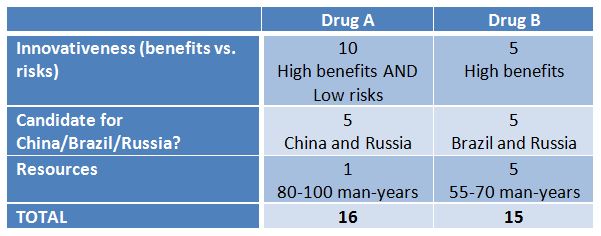Introduction
In my consulting and training engagements I frequently get to have interesting discussions with executives and senior managers from around the world. Obviously, considering the nature of my professional domain, the conversations we have regularly revolve around the topic of project portfolio management. They ask me very interesting and difficult questions, and I have to provide them with clear and succinct answers.
After several years of doing this, I suddenly noticed that no matter what industry the company belongs to, of where (geographically) the conversation takes place, I always end up answering the same questions over and over again.
So I decided to come up with a series of articles "The CEO's Guide to Project Portfolio Management - Frequently Asked Questions Answered" that will span across several posts. Check out Part 1 and Part 2 of the series.
P.S. If there are any people out there who want to submit their own PPM-related questions, do not hesitate contacting me by leaving a comment here or sending an e-mail to info@thinktankconsulting.ca
Question #5 - Will Project Portfolio Management Help Us Develop Exciting New Products and Services?
This a difficult question to answer with a simple "yes" or "no". In order for company to continuously come up with new and useful products it needs at least two ingredients:
- Culture where new ideas - no matter at which level they are generated - are welcomed and nurtured and
- A structured approach to assess, evaluate and rank the new ideas before they become projects.
Let us start with the second point. Project portfolio management has a direct impact on the second factor. To prove this let us examine one real-life case that happened at one of the global pharmaceutical companies. The organization was considering two new product ideas of which it could pick only one due to resource and financial constraints:
- Drug A - a heart disease drug, high expected benefits and low associated medical risks, targeted at Chinese and Russian markets, fairly large investment required
- Drug B - a diabetes drug, high expected benefits and unknown risks, targeted at both Brazilian and Russian markets, average investment required
Can one easily decide which project should get a go ahead and which one is to be placed on the proverbial back burner? The obvious answer is no, this is a very difficult task even with only two portfolio candidates. Imagine how difficult this becomes when the company has several dozen of project proposals all competing for the limited human and financial resources.
However this task suddenly becomes very easy if we introduce the following scoring model (see Table 1):
Table 1
All of a sudden with the introduction of the scoring matrix the prioritization (or to be more precise elimination) process becomes very easy (see Table 2):
Table 2
Project A scores 16 out of possible 30 points, while Project B gets only 15 points. Thus, unless other factors are involved the company must go ahead with drug A and postpone the work on drug B.
Let us now talk about the cultural impact. Admittedly, project portfolio management does not have a direct impact on the employee willingness to generate and submit new product or service ideas to their management. However, just based on the common sense and personal experience try answering the following question: employees of which company would be more likely to generate and lobby new product or services ideas:
- At a company with no structured approach to project selection, where all the decisions are made in the executive boardrooms or
- At an organization that has a clear transparent process for project review, evaluation and prioritization?
About the Author
Jamal Moustafaev, MBA, PMP – president and founder of Thinktank Consulting is an internationally acclaimed expert and speaker in the areas of project/portfolio management, scope definition, process improvement and corporate training. Jamal Moustafaev has done work for private-sector companies and government organizations in Canada, US, Asia, Europe and Middle East. Read Jamal’s Blog @ www.thinktankconsulting.ca
- If you have a Twitter account, please follow Jamal there: https://twitter.com/ThinktankConsul
- Like our page on Facebook: https://www.facebook.com/projectmanagementthinktankconsulting
- Connect with me on LinkedIn: https://www.linkedin.com/in/jmoustafaev
- Subscribe to my RSS feed: http://www.thinktankconsulting.ca/rss.xml
Jamal is an author of two very popular books: Delivering Exceptional Project Results: A Practical Guide to Project Selection, Scoping, Estimation and Management and Project Scope Management: A Practical Guide to Requirements for Engineering, Product, Construction, IT and Enterprise Projects.


